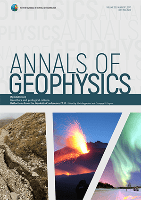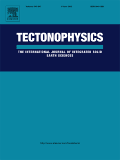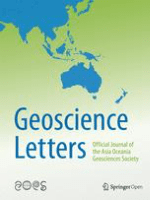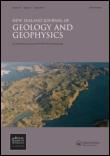
ANNALS OF GEOPHYSICS
Scope & Guideline
Innovating Solutions for Environmental Challenges
Introduction
Aims and Scopes
- Seismology and Earthquake Engineering:
Research on seismic activity, earthquake prediction, and the engineering aspects of earthquake resilience. This includes studies on seismic waves, fault dynamics, and the application of models for assessing earthquake risks. - Volcanology:
Investigation into volcanic activity, including eruption dynamics, magma movement, and the geophysical monitoring of volcanoes. The journal publishes studies that contribute to understanding volcanic hazards and their impacts on the environment. - Geophysical Data Analysis and Modeling:
Utilization of advanced analytical techniques and computational models to interpret geophysical data. This encompasses methods such as deep learning, machine learning, and various inversion techniques applied to seismic, magnetic, and electromagnetic data. - Geodynamics and Structural Geology:
Exploration of the Earth's structural features and the processes driving tectonic movements. Research in this area includes crustal deformation, fault systems, and the relationship between geological structures and seismic activity. - Environmental Geophysics:
The application of geophysical methods to study environmental issues, such as the impact of human activities on geological processes and the assessment of natural hazards. This includes studies on groundwater, soil properties, and the effects of climate change. - Geoscience Education and Public Awareness:
Research aimed at improving public understanding of geophysical hazards and risk communication strategies. This includes educational initiatives and community engagement to enhance disaster preparedness.
Trending and Emerging
- Machine Learning and Big Data Applications:
The use of machine learning and data analytics in geophysical research has surged, particularly for seismic data processing, event classification, and hazard assessment. This trend underscores the importance of computational techniques in enhancing data quality and predictive capabilities. - Interdisciplinary Research on Climate Change:
There is an increasing focus on the interactions between geophysical processes and climate change, such as the impact of geological hazards on ecosystems and human communities. This trend reflects a broader awareness of the interconnectedness of Earth systems. - Public Engagement and Risk Communication:
Research aimed at improving public awareness and preparedness for geophysical hazards is on the rise. This includes developing educational tools, community outreach programs, and effective communication strategies to inform the public about risks associated with earthquakes and volcanoes. - Advanced Geophysical Monitoring Techniques:
Emerging themes include the development and application of new monitoring technologies, such as remote sensing and integrated sensor networks. These advances allow for real-time data collection and analysis, improving our understanding of dynamic geophysical processes.
Declining or Waning
- Traditional Geological Mapping:
Research focusing solely on traditional geological mapping techniques has decreased as new technologies such as remote sensing and geophysical modeling gain traction. The integration of these modern methods offers more dynamic and comprehensive insights into geological structures. - Historical Seismology:
There has been a noticeable decline in studies that primarily focus on historical seismic events without integrating modern analytical techniques or data. As the field advances, there is a shift towards more data-driven approaches that utilize current technology for analysis. - Single-Method Studies:
Research that relies solely on one geophysical method, such as only seismic or only magnetic studies, is becoming less common. There is a growing preference for multi-disciplinary approaches that combine various methods to provide a more holistic understanding of geophysical phenomena. - Localized Environmental Studies:
There is a diminishing emphasis on localized environmental studies that do not consider broader regional or global implications. The trend is moving towards research that contextualizes local findings within larger frameworks, such as climate change or tectonic shifts.
Similar Journals

TECTONOPHYSICS
Driving Knowledge Forward in Earth and Planetary SciencesTECTONOPHYSICS is a leading journal published by Elsevier that has been at the forefront of earth and planetary sciences since its inception in 1964. With both its print and e-ISSN identifiers (0040-1951 and 1879-3266), the journal offers a reputable platform for disseminating high-quality research in Earth-Surface Processes and Geophysics, proudly positioned in the Q1 category for both fields in 2023. With a Scopus ranking of #43 out of 179 in Earth-Surface Processes and #43 out of 165 in Geophysics, TECTONOPHYSICS demonstrates a strong impact, making it an essential resource for researchers and professionals involved in the geological and geophysical sciences. Published in the Netherlands, TECTONOPHYSICS is committed to advancing knowledge in tectonics and related disciplines, fostering innovative research that impacts our understanding of Earth's dynamic processes. The journal invites contributions that push the boundaries of science, making it a must-read for academia and industry alike.

JOURNAL OF SEISMOLOGY
Pioneering insights into geophysical phenomena.Welcome to the JOURNAL OF SEISMOLOGY, an esteemed publication in the field of Earth sciences, dedicated to the study of seismic phenomena and their implications on geophysical and geochemical processes. Published by SPRINGER and based in the Netherlands, this journal has been contributing to the academic community since 1997 and is set to continue through 2024. With an impressive ranking within the quartiles—Q2 in Geophysics and Q3 in Geochemistry and Petrology for 2023—this journal is a pivotal resource for researchers and professionals seeking to expand their understanding of seismic activities, earthquake mechanics, and related geological interactions. Despite not offering open access, it remains a highly regarded platform for disseminating rigorous research and findings in Earth and Planetary Sciences, sustaining a global readership keen on advancing their knowledge in this dynamic field. The JOURNAL OF SEISMOLOGY is committed to fostering scholarly exchange and advancing scientific inquiry, making it an invaluable asset for students, researchers, and professionals alike.

Geoscience Letters
Fostering Collaboration for a Better PlanetGeoscience Letters, published by Springer, is a prominent open-access journal in the field of Earth and Planetary Sciences, recognized for its dedication to advancing knowledge and research in this vital area of study. With a reported impact factor that reflects its esteemed position—ranking in the Q1 quartile of Earth and Planetary Sciences, particularly as the journal ranks #48 out of 195 in the general category according to Scopus—the journal serves as a vital resource for researchers, professionals, and students. Since its inception in 2014, Geoscience Letters has facilitated the dissemination of high-quality research and critical insights, aiming to bridge the gap between scientific discovery and societal needs. Its commitment to open access ensures that the latest findings are readily available to a global audience, thus enhancing collaboration and innovation within the geosciences community.

GEOCHEMISTRY GEOPHYSICS GEOSYSTEMS
Advancing Knowledge in the Heart of Earth SciencesGEOCHEMISTRY GEOPHYSICS GEOSYSTEMS, published by the American Geophysical Union, is a leading open-access journal that has been at the forefront of advancing our understanding of earth sciences since its inception in 2000. With an impressive open access policy established in 2022, the journal promotes the wide dissemination of high-quality research in the fields of Geochemistry and Geophysics. Boasting a Q1 ranking in both Geochemistry and Petrology, as well as Geophysics, in the 2023 Journal Rankings, it is recognized among the top journals in its categories, positioning itself at the cutting edge of scientific inquiry. The journal has also secured notable rankings in Scopus, placing it in the 83rd percentile for Geophysics and the 71st percentile for Geochemistry and Petrology, reflecting its impact and relevance within the scientific community. Located in Washington, DC, GEOCHEMISTRY GEOPHYSICS GEOSYSTEMS serves as a vital resource for researchers, professionals, and students dedicated to the exploration of the complex interactions of geochemical and geophysical processes.

NEW ZEALAND JOURNAL OF GEOLOGY AND GEOPHYSICS
Unveiling the Earth's Secrets Through Rigorous Research.NEW ZEALAND JOURNAL OF GEOLOGY AND GEOPHYSICS, published by Taylor & Francis Ltd, stands as a prominent forum dedicated to the interdisciplinary exploration of geological and geophysical phenomena. With an impact factor that situates this journal in the prestigious Q1 category across key subjects—namely Earth and Planetary Sciences, Geology, and Geophysics—it is a critical resource for researchers, professionals, and students alike. The journal has been operational since 1958 and continues to contribute valuable insights into the complexities of the Earth's processes. Although it does not currently offer Open Access options, its broad readership benefits from an extensive archive of high-quality research findings that span from 1958 to 2024. Located in the United Kingdom, the journal remains a pivotal player in advancing the understanding of Earth's systems, making significant contributions to both academic inquiry and practical applications in the field.

Acta Geodynamica et Geomaterialia
Unveiling Innovations in Geodynamics and GeomaterialsActa Geodynamica et Geomaterialia is a well-regarded journal published by the Academy of Sciences of the Czech Republic, Institute of Rock Structure and Mechanics. Since its inception in 2004, this journal has established itself as a vital resource within the realms of Geology, Geophysics, and Geotechnical Engineering, categorized in the Q3 quartile across these fields as of 2023. With a focus on innovative research that addresses complex Earth dynamics and material behavior, it provides a platform for scholars and professionals to disseminate their findings and foster academic discourse. The journal holds an important position in the academic landscape, particularly for those engaged in interdisciplinary studies bridging geology and engineering. Although it is not an open access publication, its content remains pivotal for advancing knowledge and practices within these areas, making it an essential read for researchers and students alike. The journal's operational address is located in the vibrant city of Prague, Czech Republic, further enriching its academic character.

Russian Journal of Pacific Geology
Pioneering Research in Geology and BeyondThe Russian Journal of Pacific Geology is a pivotal resource in the realm of Earth sciences, published by PLEIADES PUBLISHING INC. With an ISSN of 1819-7140 and an E-ISSN of 1819-7159, this journal has established itself as a significant publication for researchers, professionals, and students who explore the intricate geology of the Pacific region. Covering a wide array of topics including Geochemistry, Petrology, Geology, Geophysics, Oceanography, Paleontology, and Stratigraphy, the journal's relevance is underscored by its categorization within Q3 quartile rankings across multiple disciplines in the 2023 metrics. Operating from the United States, its influential publications span from 2007 to 2024, attracting a diverse audience dedicated to advancing the geological sciences. Although not an open access journal, it serves as a valuable repository of knowledge, presenting original research, reviews, and critical discussions that enhance scholarly discourse. The journal is recognized within the global scientific community, addressing significant geological challenges while fostering collaboration and innovation among scholars in the Earth and Planetary Sciences.

JOURNAL OF GEOPHYSICAL RESEARCH-SOLID EARTH
Advancing Solid Earth Sciences for a Sustainable FutureJOURNAL OF GEOPHYSICAL RESEARCH-SOLID EARTH is a prestigious journal published by the American Geophysical Union, dedicated to advancing the study of solid Earth sciences. With an ISSN of 2169-9313 and E-ISSN of 2169-9356, it serves as a leading platform for rigorous research findings and innovative advancements within the fields of Earth and Planetary Sciences, Geochemistry and Petrology, Geophysics, and Space and Planetary Science. The journal has achieved an impressive Q1 quartile ranking across these categories, reflecting its high impact in the academic community and underscoring its role in influencing scientific discourse. Notably, it holds an esteemed position in Scopus, ranking 15th among 159 journals in Earth and Planetary Sciences (miscellaneous) as well as within the top 20 in several other geophysical domains. Researchers and practitioners are encouraged to contribute their work to this esteemed journal, which publishes comprehensive articles from 1979 to the present, thus providing a crucial repository of knowledge for those engaged in solid Earth research. Although it does not currently offer Open Access options, the journal's prestigious reputation ensures its articles reach a wide audience of academics, professionals, and students alike, fueling a deeper understanding of our planet's processes and challenges.

Solid Earth
Advancing Earth Science for a Sustainable FutureSolid Earth is a prestigious open-access journal published by COPERNICUS GESELLSCHAFT MBH, dedicated to advancing the understanding of geological and environmental sciences. With an ISSN of 1869-9510 and E-ISSN 1869-9529, this journal has been at the forefront of the Earth sciences since it became fully open access in 2010. Based in Göttingen, Germany, it features a rich array of interdisciplinary research relevant to earth-surface processes, geochemistry, paleontology, and geophysics, among other fields. The significance of Solid Earth is underscored by its rankings in the Q1 category across multiple related disciplines, demonstrating a strong impact factor within the community. As of 2023, it stands out with an impressive Scopus ranking, pushing the boundaries of knowledge and research excellence. By providing a platform for high-quality scientific contributions, Solid Earth is essential for researchers, professionals, and students looking to explore and disseminate impactful findings in the pursuit of sustainable earth science advancements.

GEOTECTONICS
Charting New Territories in Tectonic Research.GEOTECTONICS is a distinguished academic journal published by PLEIADES PUBLISHING INC, focusing on key developments in the field of geology. Established in 1978, the journal has dedicated itself to exploring the intricate processes and phenomena associated with Earth's tectonic systems, making substantial contributions to Earth and Planetary Sciences. With an impressive impact factor reflected in its Q2 ranking within the Scopus category of Geology, GEOTECTONICS stands out as a valuable resource for researchers, professionals, and students alike. The journal offers a platform for rigorous peer-reviewed research that spans both fundamental theories and practical applications in geosciences, affirming its significance in fostering academic discourse and advancing geological knowledge. Although it currently does not offer open access, the journal's accessible format and continued publication through to 2024 ensures that it remains at the forefront of geoscientific inquiry.